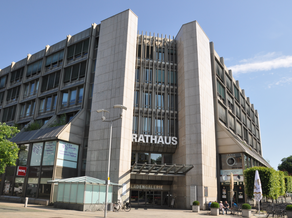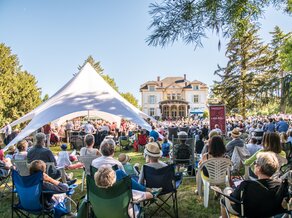Participation process for the mobility concept
The accompanying public participation was carried out both in person and in digital formats. Mixed formats were also used. A working group with members from administration, politics and associations accompanied the process from the outset.
The composition of the project-accompanying working group:
- Administration: representatives from the product areas of urban planning, urban development, transport planning, transport authority, urban development, public transport, environmental and landscape planning, economic development, advice for the disabled
- Politics: City councillors from the parties and voter groups represented in the city council, in particular their transport policy spokespersons
- Associations: Hochtaunus passenger lobby, ADFC
- Also: Kur- und Kongress GmbH, Stadtwerke Bad Homburg, mobility officer of the Hochtaunus district
In December 2020, a website went online that served as an information and exchange platform on which the citizens of Bad Homburg and all stakeholders and interest groups involved could actively participate in the creation of the Bad Homburg 2035 mobility and transport concept. The platform provided information on the progress of the project, shared video messages from the Lord Mayor, among others, and called for participation in the household and commuter survey.
Household and commuter survey
In consultation with the accompanying working group, the survey was extended as an important participation tool to include Bad Homburg's commuters.
The mobility surveys were conducted as a standardized online survey in the period from 15 December 2020 to 15 February 2021. A total of 1,214 completed questionnaires were evaluated for the household survey and 2,170 for the commuter survey. With this participation rate, the survey results can be considered representative.
Workshop on measures
A workshop on measures in November 2021 served to identify key areas of action from the citizens' perspective. Some specific ideas from the measures workshop were taken up in digital implementation discussions between December 2021 and April 2022. The aim of the implementation discussions was to concretize initial solutions.
An initial presentation of the concept took place as a public event in October 2022. At this event, potential was identified for fleshing out individual measures and the need for greater public participation in prioritizing measures.
Digital implementation discussions
Concrete ideas from the measures workshop were taken up in digital implementation discussions between December 2021 and April 2022. Initial solutions were specified together with relevant stakeholders. The focus here was on local mobility and, as an example, the design of Dorotheenstraße, the establishment of mobility stations, company mobility management and the establishment of an inter-company carpooling platform.
Voting for measures
The public was involved in the final selection of the 10 starter measures in May 2023 in the form of a voting process. Over a period of three weeks, interested parties were able to vote for their personally most important measure within the catalog of measures via the participation website. In addition, two on-site meetings were held in Louisenstraße, where passers-by were able to vote for their favorite measures and discuss them with the project team.
The aim of this final participation round was to compare the technical prioritization of the starter measures in terms of their impact, costs and feasibility with the personal perception and prioritization of road users. The result was that the participants cast a clear vote in favor of better cycling infrastructure and consequently another cycling measure was added as a starter measure.




